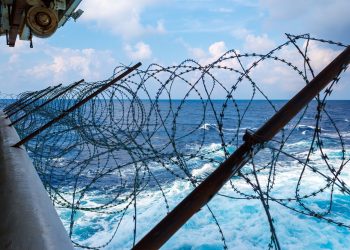Shipments of iron ore fines (IOF) from Pepel Port, Sierra Leone is on the increase, and vessels loading this cargo should be alert to the risks of liquefaction, as North P&I club urged.
This represents a phased restart of iron ore mines in the region, but it is important to note that the cargoes intended for shipment may have, in some instances, been sat in uncovered stockpiles for a number of years.
Furthermore, some of the cargoes were previously considered too low grade for export purposes and would originally have been targeted for blending with higher grade material currently not extracted from the mines due to wider market conditions.
Where sighted, the declarations and accompanying documentation provided to the vessel by shippers suggest a lack of knowledge of the requirements of the IMSBC Code 2020 and the liquefaction risks involved with the carriage of group A cargoes.
Iron ore fines are by definition Group A and have a particle size distribution (PSD) of 10% or more <1mm and 50% or more <10mm, with a total Goethite content of <35%. Any material specification outwith this criteria is Iron Ore and Group C.
…material experts Roxburgh told North Club.
In some cases, the shipper’s declaration has been inaccurate and shown a number of inconsistencies which would indicate the Shipper has not adequately assessed or understood the safety characteristics of the material intended for loading.
The IOF from the region can be a very dangerous product when shipped with moisture contents in excess of 13-14%, with a risk of liquefaction occurring at 14% and above. Commonly materials from the region will typically demonstrate moisture contents in excess of 11-14% when the wet season commences.
“In the dry season we would expect the upper surfaces of any stockpiled material to appear relatively dry but wet at increasing depths.
Given some Shippers apparent lack of understanding there is a chance that any moisture content determination is inaccurate and not representative of the cargo intended for loading.
Additionally, check tests (can test) run on this material may provide misleading results if not correctly interpreted, Therefore the presence, or not, of surface water in the can should not solely be used as the basis for loading acceptance”…material experts added.
Early identification of any documentary discrepancies or concerns is key to providing a timely resolution before loading and therefore minimising delays.
Calling vessels should ensure they receive the shipper’s declaration and test certificates well in advance to address any issues. If there are concerns, seek guidance from your usual P&I contact.
…North club concluded.






























































